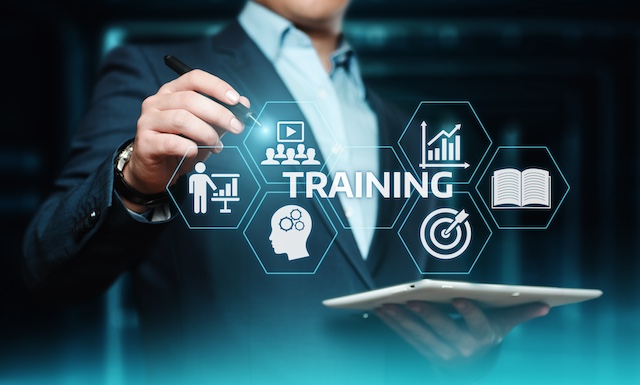A training needs analysis (TNA) is a systematic process organizations use to identify gaps in employee knowledge, skills, and abilities that hinder operational efficiency or prevent achieving business goals. This analysis is the foundation for developing targeted training programs that address specific needs, align with strategic objectives, and ultimately enhance overall performance.
For managers and business leaders, conducting a TNA is crucial before launching any training initiative. It ensures that the organization invests in purpose-driven training directly linked to immediate and long-term business needs. The process typically involves several key steps, including:
- Identifying what competencies are required for various roles within the company
- Assessing current competency levels among employees
- Determining the specific gaps that training needs to address
The benefits of a TNA are multifaceted:
- It helps optimize training budgets by focusing resources on areas with the most significant impact on performance.
- It enhances the relevance and effectiveness of training programs, leading to improved employee morale and job satisfaction as staff feel more competent and valued.
- By aligning training with business goals, a TNA creates room for better succession planning, innovation, and adaptability.
Resilience can be built. Download our guide for tips on how to strengthen your workforce.
5 Key Steps to Conducting an Effective Training Needs Analysis for Company Improvement
A well-conducted training needs analysis is invaluable for any organization looking to bridge the gap between current employee skills and desired performance outcomes. A TNA can identify specific training needs and reveal opportunities to improve overall business processes and training effectiveness. Here are five key steps to conducting an effective TNA with a focus on company improvement:
1. Conduct a comprehensive business assessment
This step goes beyond simply understanding staffing levels and positions. Partner with key stakeholders like department heads, executives, and HR to gain a holistic view of the company’s current and future goals. Focus on the following:
- Strategic goals and objectives: Identify the company’s mission, vision, and critical goals. What are the short- and long-term objectives for each department? How do these objectives contribute to the overall company’s success?
- Skills- and knowledge-mapping: Analyze the specific skills and knowledge required for each position within the company. How do these individual skills contribute to achieving departmental and company-wide goals? Are there any emerging skill sets needed to stay competitive in the industry?
- Performance analysis: Review historical performance data across departments and individual employees. Are there any performance gaps or areas for improvement? Can these gaps be linked to a lack of specific skills or knowledge?
- Learning and development (L&D) culture: Assess the current L&D culture within the company. Do employees feel encouraged to develop new skills? Is there a system for identifying and addressing training needs?
2. Identify compliance requirements and industry trends
This step ensures your training programs adhere to legal or industry-specific regulations. Consider leveraging this compliance training for broader company improvement.
- Compliance as a foundation: Identify all mandatory training requirements, including industry regulations and company policies. Ensure your training programs effectively address these requirements.
- Compliance as a springboard: Use compliance training to reinforce positive behaviors and company values aligning with your strategy. For example, if data management training is mandatory, consider incorporating elements that promote a culture of data sensitivity beyond the specific legal requirements.
- Stay ahead of the curve: Monitor industry trends and identify any emerging skills or knowledge requirements that may impact your company’s future success. Analyze how these trends might affect existing compliance regulations and incorporate them into your training plans.
3. Gather data through multiple channels
While traditional methods like interviews and questionnaires are valuable for gathering individual training needs, consider using a multi-pronged approach to gain a more comprehensive picture of company-wide needs.
- Focus groups: Facilitate discussions among employees from different departments to identify common skills gaps and challenges. This can reveal broader performance issues or highlight the need for cross-departmental training initiatives.
- Performance reviews: Analyze existing performance review data to identify patterns in skill deficiencies or areas where training could improve employee performance metrics.
- Task analysis: Conduct observations or “shadowing” exercises of employees performing tasks. Doing so can divulge workflow inefficiencies or identify areas where specific training could improve productivity or accuracy.
- Learning management system (LMS) data: If your company utilizes an LMS, analyze usage data to determine which training materials are most frequently accessed or least completed. This process helps you discover areas where employees may need additional support or highlight training content that is no longer relevant.

4. Analyze data for actionable insights
Once you’ve collected data from various sources, the real work begins. Here’s how to turn data points into actionable insights for improving the company and its training processes:
- Identify trends and patterns: Look for common themes across the data. Are specific skill sets consistently lacking across departments? Do certain performance issues suggest that process improvement or workflow restructuring alongside training is needed?
- Prioritize training needs: Not all skills gaps are equal. Determine which skills are most critical for achieving company goals and prioritize training programs accordingly.
- Assess training delivery methods: Consider how the training will be delivered to maximize effectiveness and address company needs. Can traditional classroom training be supplemented with online modules or blended learning approaches? Would it be advantageous to reinforce training programs and workshops with coaching? Are there opportunities to leverage technology for more interactive or engaging training experiences?
- Identify knowledge gaps in training materials: Use the data to identify gaps or inconsistencies between the current training content and the actual skills employees need. This can help you update existing training materials or develop new programs addressing the identified needs.
5. Develop a continuous improvement training plan
The final step is establishing a system for continuous improvement. Here’s how to create a sustainable training plan that benefits the company in the long run:
- Align training with business goals: Ensure all training programs are directly linked to specific company goals and objectives. This step reinforces the value of training and demonstrates its role in driving overall business success.
- Develop a scalable training framework: Design a training framework that can be easily adapted to address future needs. Consider using training elements that can be combined or customized for different skill sets or departments. For example, a digital platform that helps with goal-setting and -tracking might be used by all employees, with specific workshops and training programs offered to certain job levels or team members with particular needs and executive or career coaching available to those who would benefit.
- Build-in evaluation and feedback mechanisms: Establish a system for evaluating the effectiveness of your training programs. This could include pre-and-post-training assessments, employee satisfaction surveys, or tracking changes in performance metrics after training completion.
- Promote a culture of continuous learning: Provide opportunities for employees to participate in ongoing learning initiatives beyond formal training programs. These opportunities could include knowledge-sharing sessions, mentoring programs, or access to online learning resources.
Help your employees take charge of their careers. Download these tips to make career development conversations more meaningful.
Implement a TNA Process at Your Company Today
Establishing a training plan that focuses on continuous improvement ensures that your training programs remain relevant, effective, and adaptable to the company’s changing needs. As a result, you will foster a more skilled, engaged, and flexible workforce that can drive long-term success for the entire organization.
Looking for programming to support your training plan? INTOO can help. We offer training programs for leadership, managers, and employees, workshops, and career coaching so that every member of your workforce can benefit. Contact us today to learn more.











